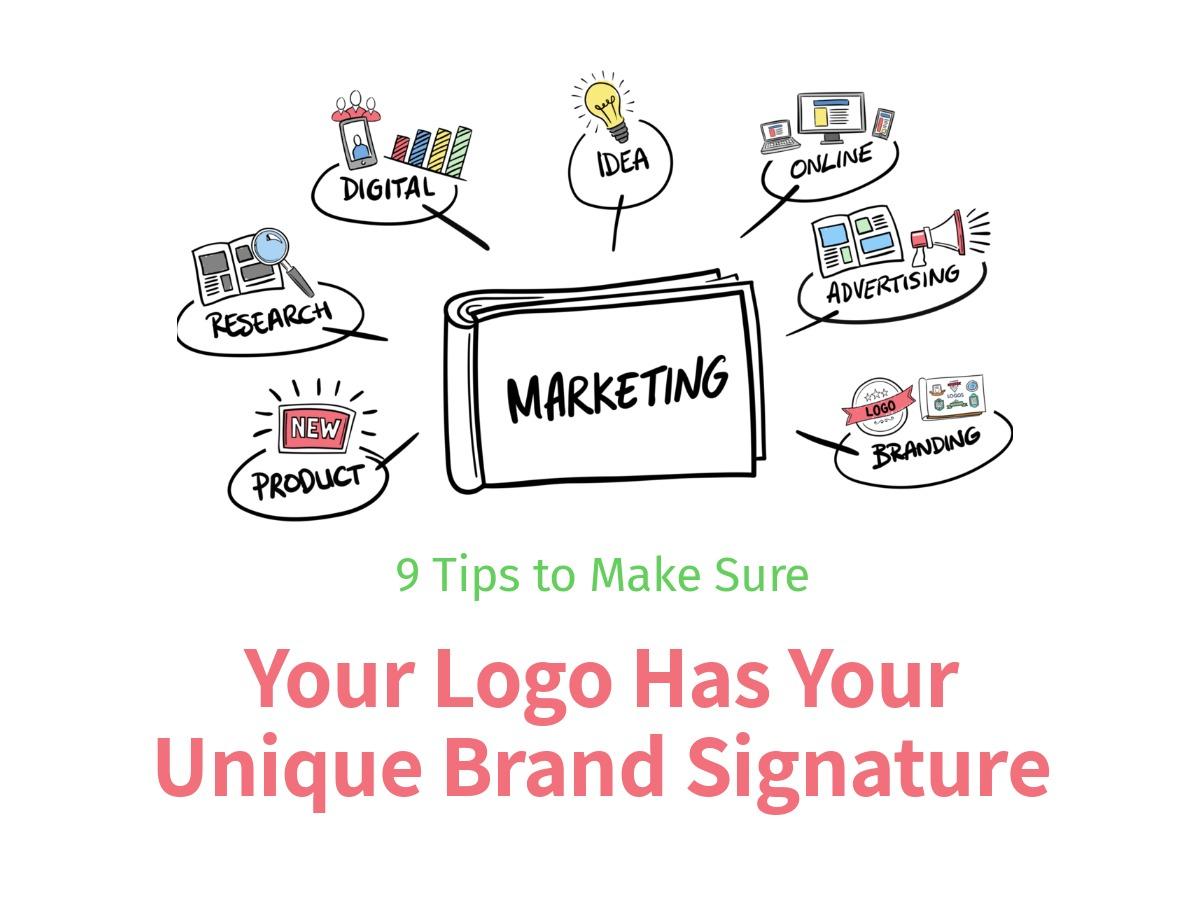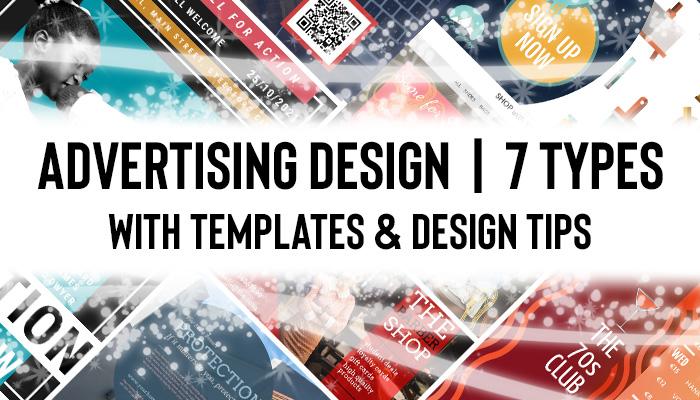So, you’re starting your own business. You’ve got the idea, the investment, and even thought up a successful marketing strategy. Now comes the fun part – designing the logo.
Making a logo isn’t as simple as creating a bad translation of whatever is in your head and thinking, ‘that’ll do’. A clever logo has the power to take your brand to the next level. Your logo needs to be simple enough to make it memorable, while being ingenious enough to represent your company.
Some companies have logos that everyone just knows. We don’t even need to see a picture to know who is behind a big black tick or a giant red target. There are plenty of design trends that will give you a push, but you want to make your brand stand out. With the right know-how, you can turn your logo from an idea in your head to a household name.
Whether you’re selling the latest fax software or starting a revolution in frying pans, having a great logo will make you instantly recognizable. You want to reach a point when people are thinking of a product, they’ll think of your logo and not your competitors.
Here are 9 tips to help you get to that stage.
1. Use Double Meanings

Who doesn’t love a good double entendre? Businesses use them all the time to create memorable and funny names. Double entendres, when used with words, are sentences that have two meanings.
A great example of a double entendre is one from Mae West who famously said:
“Women like a man with a past, but they prefer a man with a present.”
Why not add a twist to this traditionally wordy way of thinking and create digital change by creating a logo with a double meaning?
Look at this image from Wine Place.
It looks like both an upside-down glass of wine, and a thumbtack to indicate location. Clever, right? It’s simple, effective, and conveys the name of their brand and what they do all within a simple image.
Think about what your brand sells and the image you want to give off. Do you want to be playful, serious, or something in-between?
Keep in mind that your main goal is to be memorable. So, if you are looking for something simple, but effective, a double meaning could be just the thing for you. That playful, clever push may be just the thing to convert leads into customers.
2. Consider Color

If your brand sells lightbulbs and you use a brown and gray color palette, you can end up with a confusing message. Colors come with specific meanings and this is something you need to understand with logos.
For example, say you are setting up a customer contact center. You might think a red logo covered in exclamation points suggests urgency. Unfortunately, it can also imply that the company is dangerous and untrustworthy. Whilst using soft colors, like pale blue, will give the idea that your brand is friendly.
Colors have a much stronger ability to subconsciously communicate than we may realize. So, consider colors that benefit the brand and give customers a positive message.
Designers will often focus on using colors that complement each other to make a logo harmonious and soothing, whilst contrasting colors might be more attention grabbing. Using a color wheel, designers and artists can choose complementary or contrasting colors to create a design that fits their brand identity.
3. Keep Things Simple
It’s always tempting to go bananas when designing your logo. Sharks with lasers wearing top hats will grab the attention of customers, but not necessarily for the reasons you want. This sort of image won’t stand the test of time, and you want a logo that will last.
Think of a logo in the same way as a welcome email. Resist the temptation to overload peoples’ senses with a barrage of information (or, in this case, imagery). Your logo is your first impression so make it count.
A well thought out and simply executed company logo can be incredibly effective. Think of brands like Apple. You see it and know straight away who it is. This is what you should aim for.
Where Apple excels is the simplicity combined with showing off the company’s personality. It’s minimalist, like their products. The bite mark adds something extra and has a deeper meaning too (bite = byte… mind blown).
4. Choose Your Font Wisely
When setting up a business, everything needs to be considered. From taking the time to choose the right VoIP provider to figuring out your target audience. You should give just as much through to every aspect of your logo design, including font choice. And you can create a modern presentation for your logo design with this high-quality 3d logo mock-up.
Are you a child-friendly business? Why not go for something in a handwritten, youthful style font. Is your business selling B2B equipment? Opt for a more simplistic, easy-to-read font. You get the picture.
Legendary as it is, try and refrain from using Chiller. And the less said about Comic Sans the better. Don’t even get me started on Wingdings. Custom fonts – ones that are uniquely designed for you – are often far better than those that come packaged in your graphic design program. After all, would Disney be as recognizable if it was in Times New Roman?
Choosing the right font goes beyond logo design. A great landing page can make an even bigger impact if your font (or font family) represents you properly.
5. Make it Mobile Friendly

For a brand to really be a part of workplace digitization, it needs to be mobile-friendly. You might even have an app. This means that the logo needs to be mobile friendly too. Your logo, therefore, needs to be simple and flattened.
Instagram, for example, changed its image from a detailed polaroid to a straight-forward outline of one instead. This minimal effect is much more effective and makes the brand stand out from before.
When translated onto mobile from the computer, and vice-versa, overly detailed designs can end up pixelated or compressed. Minimal, flat designs work well on both the computer and mobile devices.
6. Take Inspiration From the Experts

We are often told to take inspiration from logo galleries on the web for inspiration. However, it’s one thing checking out a gallery for original design inspiration, but a lot of these logos are created by students as a university project. And even if they are real, there is no measure of how successful these emblems are.
There is nothing wrong with taking some inspiration from unknown brands – lots of people have some wonderful ideas. But to know how to make a logo that really stands out, you need to see what has worked for the experts. Especially the ones that have stood the test of time.
Let’s look at a brand like Coca-Cola. Its design is literally just the brand name in a fancy font. But we all know it. Their brand identity is so powerful that all an actor has to do is pull a beverage out of the fridge and suddenly an audience is craving the drink themselves. Just through seeing the company logo.
How many people have said they know it’s the holiday season when they see that first Coca-Cola advert? All it is a red lorry driving around with that white text-based logo and a picture of Santa. Coke has nothing to do with Christmas, really. Yet, their logo is so recognizable, it gives people an instant Christmassy feeling. Your logo design should be memorable, just like the design of the Coca-Cola and Pepsi logo.
A truly successful logo will help create an effective customer experience. Think of other huge brands too. How have they adapted over history? How does their logo work on the packaging? In TV adverts? On posters? In the supermarket? Reflect on them and think about how your brand logo can be designed to make people want to buy and stand the test of time too.
7. Know Your Audience
In reality, people will only glance at your logo. Other than you, and maybe some graphic design students, no-one is going to analyze it quite so deeply!
It needs to be something that can speak to people on a deep level instantly. This means you need to know your audience and how to reach them. What message are you trying to get across to your audience with your logo?
Let’s say you are a telecommunications company. Your firm’s unique selling point is that you have an excellent progressive dialler. The obvious solution is that, somewhere in your logo, you will want to put a telephone. To highlight your unique selling point, you may want to try and work something in that suggests speed – whether through a symbol or color choice. This gives an instantly recognizable indication that your company involves phones and people.
It helps to write down who your target audience is and what it is about your business that you want to make stand out. What is your ideology and what hopes do you have for the future? Keep these points in mind when designing the logo.
Consider the kind of personality you want to try and represent. Something more serious can use harsher lines and bolder colors. Whilst if you want to give off a friendly vibe, consider using more than one color, and soft, rounded lines.
8. Text or Image?

You need to think about the type of logo that will represent you best. Do you just want a logotype (aka, just writing) like Ray Bans or Coca-Cola? Do you want writing and a picture, like Pepsi or Starbucks? Or are you confident an image alone might work, like Instagram?
If you’re not including text at all, the logo needs to suggest your business name in a memorable way. Take Twitter for example. The image of a bird represents the ‘tweets’ people send. It is simplistic, but an instantly recognizable design.
Say, for example, your company was called ‘Pro-Ject!’ and you deal with project management solutions. You could either just have a logotype and write ‘Pro-Ject!’ in your chosen font.
Maybe you want something a bit more colorful. You could have more simplified writing and a bright green, highly stylised image of a tie in place of the exclamation mark. Alternatively, you could focus on creating an image and only feature the text minimally.
Again, it’s about making things simple and considering what best works for your firm. Make something that accurately represents you, as well as sticking in your customer’s head.
9. Make it Scalable

This is a much bigger point than many companies realize. It’s one thing making a grand logo that catches everyone’s eye, but will that image fit on a pen? Can it be blown up to be a background in a teleconference? Or can it be narrowed down to make one letter of it instantly recognizable?
No matter how the design is made, it needs to be recognizable on every piece of media.
Take the Disney logo for example. The full design is a magical castle with a shooting star going over the top of it. Walt Disney Pictures is written underneath the picture. As a full picture, that’s quite a lot to fit in. But we all know the company and what it does when we see that full image.
Then it narrows down a little bit and even when we see the name Walt Disney, we still recognize the company. It’s such a well established brand that we can narrow it down to ‘Disney’, and even just ‘D’ in the font. Even with just a single letter, the whole world and its dog still knows what it means.
You could take either element of that logo and put it on a billboard or put it on a pin and people would still know who the company was. Try and design a logo that you can also do the same with.
Whatever design you choose, it must appropriately reflect your brand. Consider what you are trying to say with your logo and what you are trying to represent. As well as being a good representation, it needs to be visually appealing and stick in people’s heads. Taking note of font design, color theory, and scalability are great ways to ensure that your logo works.
By implementing all these points, your logo will be well on the way to becoming a recognized household image.

Richard Conn
Richard Conn is passionate about connecting businesses and customers and has experience working with Fortune 500 companies such as Google, Experian, Target, Nordstrom, Kayak, Hilton, and Kia. Sometimes uses Online Storyboard Creator from Design Wizard.


